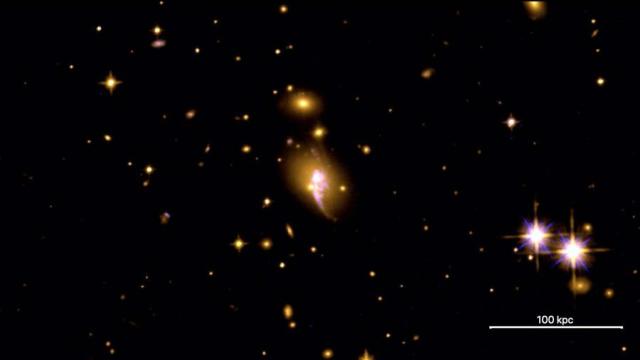Ask Ethan: Were Mars And Venus Ever Living Planets?
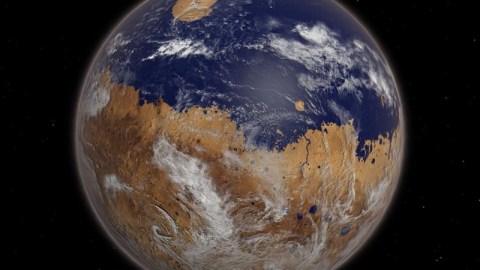

Life has been on Earth for over 4 billion years. Were we the only ones?
One of the most elusive questions in all of science is the question of life in the Universe. We know that it exists on Earth, that every extant living organism on Earth descended from the same common ancestor going back billions of years, and that life has been on Earth continuously for over 4 billion years: at least 90% of our planet’s existence. But we don’t know how ubiquitous life is at all. We have no information about life on other worlds in our Solar System, on life in other Solar Systems, or on intelligent life anywhere else in the Universe. All we have are constraints on what could be out there.
Every planet that could have had life on it, at any point, represents a chance for life to develop. We know Earth was one of those chances that panned out, but at least two other worlds in our young Solar System — Mars and Venus — represented potential chances as well. Could they have had life on them, if not now, than in our distant past? That’s what Carol Lake wants to know, writing in to ask:
“Could it be possible that Mars and Venus were living worlds? Like Earth climate change is killing it so climate change is going to kill all living things and then Earth will become just another planet that the new life wonders about the possibility of us?”
It’s an interesting question to explore, as both Mars and Venus did suffer catastrophic climate events billions of years ago. Here’s what remains possible based on what we know.
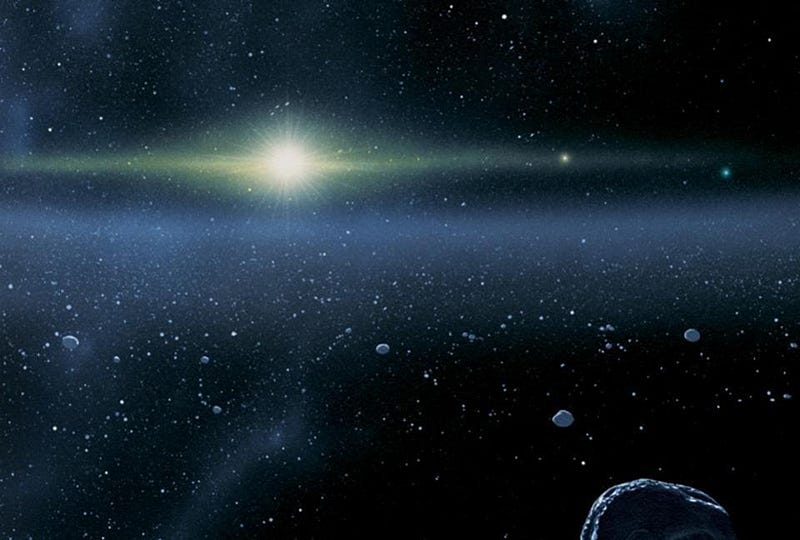
Let’s go way, way back some 4.6 billion years: back to the earliest days of our Solar System’s formation. When Solar Systems like our own first form, there are a number of things that must occur in a particular order. In the case of what gave rise to our Solar System, we believe this is what had to occur:
- a molecular cloud of gas contracts under its own gravity,
- the regions with the greatest concentrations of matter collapse more quickly,
- leading to the formation of new stars and star systems in the regions of greatest collapse,
- where the largest mass clumps grow fastest, becoming the most massive stars,
- but smaller clumps grow slower, becoming lower-mass stars,
- and that one of those smaller clumps, with only one large initial (central) mass, became the proto-star that would grow into our Sun.
That central mass will continue to grow, emitting copious amounts of radiation and slowly heat up in its core. As material continues to gently fall onto the central proto-star, a circumstellar disk emerges around it. Gravitational instabilities will form in that disk, leading to planetesimals: the seeds of what will eventually become planets.
What happens next is not an easy process to predict, as planet formation is a chaotic process. There’s are basically three “zones” with respect to the star or proto-star that’s forming in the center, which defines what types of elements you wind up with.
- In the innermost region, closest to the star, is what’s known as the “soot line.” Interior to this zone, many of the carbon-based molecules that are thought to be precursors to life, like polycyclic aromatic hydrocarbons, are destroyed. Only heavy elements, like metals, can survive in this innermost region.
- Beyond that, exterior to the soot line, you can have these complex compounds, but no ices: water-ice, ammonia ice, dry ice, nitrogen ice, etc. As long as you’re still inside the frost line, those volatile compounds will be vaporized. A young Venus, Earth, and Mars were all outside the soot line but inside the frost line.
- And exterior to the frost line, you can have all the volatile compounds there are. Various ices are fine; large amounts of hydrogen and helium can easily survive when bound to a gas giant; asteroid-like and comet-like bodies are common.
Over time, the planetesimals that form will gravitationally interact, grow, merge, and chaotically influence one another. Some bodies get flung into the Sun; others out of the Solar System; others accrete onto larger masses. Eventually, a stable planetary configuration is reached.
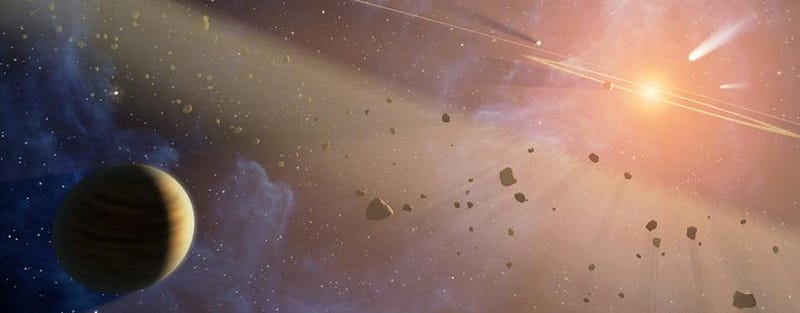
In these latter stages, the volatile compounds bound onto the objects located beyond the frost line suffer two fates: they either wind up bombarding one of the surviving planets, or they wind up getting scattered elsewhere. (It’s thought that this is likely where the water found on Earth and the other inner planets comes from.) Typically, there are only two locations, long-term, where those objects wind up: exterior to the initial frost line but interior to the orbit of the next planet out, and beyond the orbit of the final planet in the solar system. These locations, in our own Solar System, correspond to the asteroid belt and the Kuiper belt/Oort cloud, respectively.
At last, we come to about 4.5 billion years ago, where in our Solar System, we had three worlds that we suspect were relatively similar. Venus, Earth, and Mars all were rocky planets, with thin-but-substantial atmospheres, water on their surfaces, some of which was likely in liquid form, and they were all extremely rich in organic compounds: the precursor molecules to life.
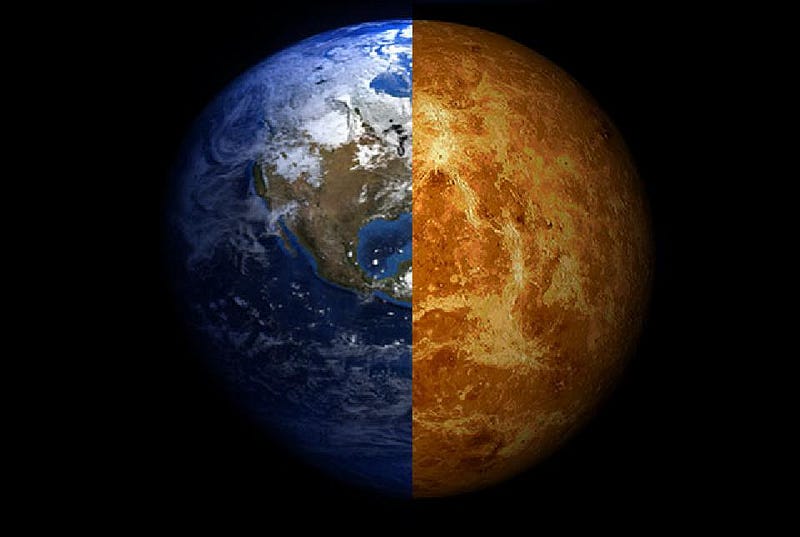
The big question we have to ask ourselves is: what happened?
What happened, on Venus, to turn it into the hellhole of an inferno that it is today? When did it occur, how did it happen, and could there have been life thriving and surviving on that planet prior to this catastrophic event?
What happened, on Mars, to cause it to lose its atmosphere, to dry up, and to freeze, rendering the biological processes that we associate with life either impossible or so rare that we have yet to detect them?
And what’s happening now, on Earth, and does that have the potential to lead to a similar fate to either Venus or Mars: where a once habitable (or, at least, potentially habitable) planet is now totally inhospitable to life as we know it?
One thing is certain: despite all the uncertainties surrounding the origin of life on Earth, we know that once it took hold on our planet — an event that occurred more than 4 billion years ago — it survived and thrived in an unbroken chain of events that have occurred ever since. While there were many mass extinction events, they only served to make way for the surviving species to reproduce and fill the then-vacant ecological niches. Our planet remains a living one.
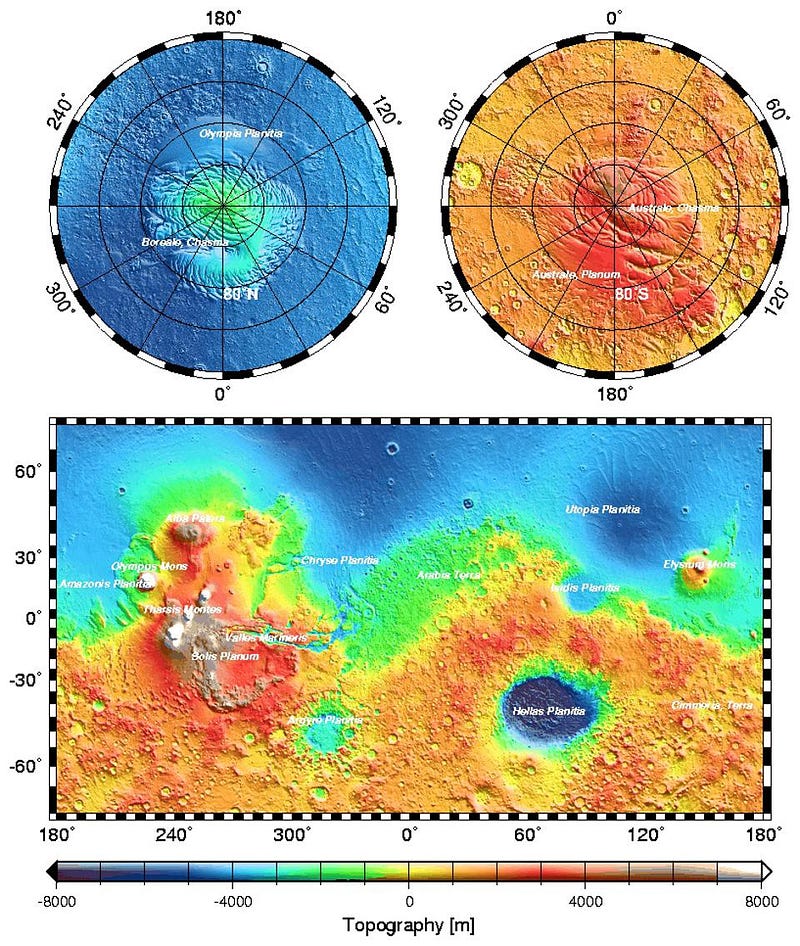
In the early stages of our Solar System, however, Earth wasn’t necessarily the only living planet. All three worlds — Venus, Earth, and Mars — experienced external impact events and had to deal with internal geologic processes. There were magnetic events in the core, continental uplifting and erosion, and the eventual presence of mountain ranges and basins. All of these worlds experienced extensive volcanic activity, which added volatile compounds and copious amounts of carbon dioxide to the atmosphere, while also creating relatively smooth ocean bottoms. All three worlds, very likely, had a watery past.
But there are three major differences between these planets that likely led to their vastly differing fates.
- One is their differing orbital distances from the Sun, with Venus orbiting at just ~72% of the Earth-Sun distance and Mars orbiting much farther out, at around ~150% of the Earth-Sun distance.
- Another is the rate of their planetary rotations, where Mars has a day similar to Earth’s, just about 40 minutes longer, while Venus rotates in the opposite direction, and takes more than 200 Earth days to complete an axial rotation.
- And finally, there’s the physical sizes of these planets: while Venus is close to Earth-sized, at ~95% our planet’s diameter, Mars is only about half the diameter of Earth.

Life on a world is generally regarded as a stabilizing force, the same way that a buffer solution in chemistry prevents the addition of an acid or base from making the entire solution too acidic or too basic. Life reaches a sort of equilibrium state with its environment, where any major changes in temperature — either in the positive or negative direction — will lead to life processes working to counteract that change. Only if a major change occurs to fundamentally alter the equilibrium state, like the great oxygenation event did on Earth, what yeast cells do in an unlimited-nutrient environment, or what humans are doing with fossil fuels today, can a runaway event take place.
But on Venus and Mars, even if life was once present on those worlds, its presence was insufficient to stop the runaway processes that were very likely initiated by astrophysical and geological factors. Venus may have been a thriving world for hundreds of millions of years, possibly even as many as 2 billion, according to some. Its conditions may have been Earth-like, with liquid water on the surface and possibly a whole lot more. Similarly, Mars once had oceans, rivers, formed sedimentary rocks and hematite spherules, and was temperate and wet for at least 1.5 billion years.
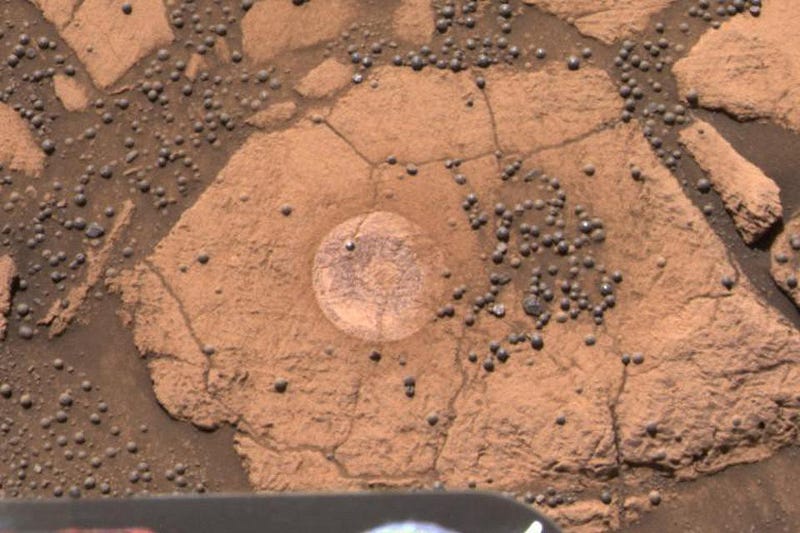
The big question, of course, is “what happened?”
On Venus, the factor that doomed it is likely very simple: its proximity to the Sun. Given how close it is, it receives about double the amount of incident energy on every square meter of its surface compared to Earth. With even a small amount of water vapor in the atmosphere of early Venus, a large greenhouse effect would ensue, raising the temperature of Venus further. At higher temperatures, the water vapor concentration in the atmosphere increases further, which raises the temperature further as well.
Unfortunately for Venus, this process cannot simply gradually increase forever. At some critical moment, the surface temperatures on Venus will reach a critical value: about 100 °C (212 °F), or maybe a little higher depending on the atmospheric pressure at the time. When that occurs, the liquid water on the surface of Venus will begin boiling away, launching an enormous amount of water vapor — basically, the sum of all of the Venusian oceans — into the atmosphere, and that leads to a runaway greenhouse effect. All of a sudden, Venus’s atmosphere is far too hot to admit life on the surface; the only place where it could theoretically have persisted is in the upper atmosphere of Venus, ~60 km up or so. Whenever this occurred, any life that previously existed on Venus would likely meet its end.
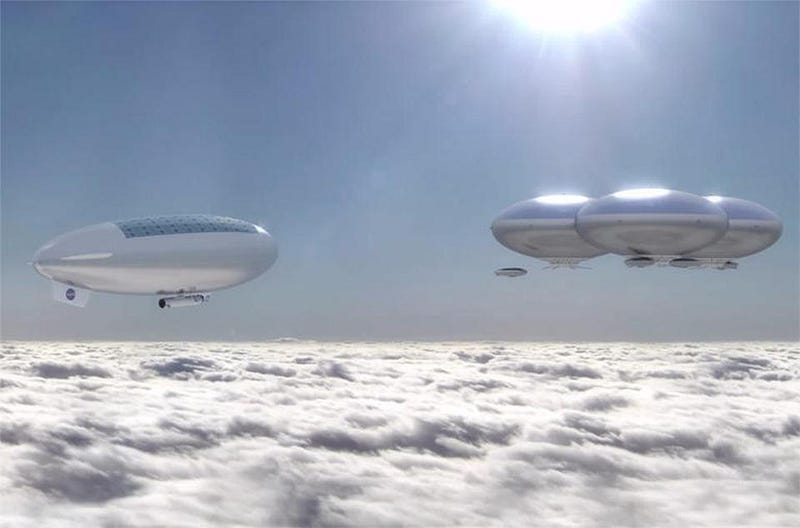
Meanwhile, on Mars, it receives only ~43% of the energy Earth receives (from the Sun) on every square meter. In order for Mars to have been watery and wet — which there’s an overwhelming amount of geological evidence for — there must have been a substantial, thick atmosphere on Mars long ago. Only a strong greenhouse effect could have kept both the temperatures and pressures where they needed to be for liquid water to exist on the Martian surface.
So what happened on Mars?
The only thing that could have kept Mars’s atmosphere intact was the protection of a planet-wide magnetic field, similar to what Earth has today. Without it, Mars’s atmosphere would get stripped away by the solar wind: something that NASA’s MAVEN mission has measured directly. Due to the much smaller size of Mars compared to Earth, its core cooled much more rapidly, eventually leading to the death of the internal magnetic dynamo that actively diverts those solar particles away. Without a protective magnetic field — which we estimate died after about ~1.5 billion years — practically the entire Martian atmosphere would have been stripped away in only ~0.01 billion years: a cosmic blink-of-an-eye.
Without that atmosphere, the liquid water either froze or sublimated, any life either went dormant or died out, and Mars has been cold and (largely) lifeless for the ~3 billion years that have passed ever since.
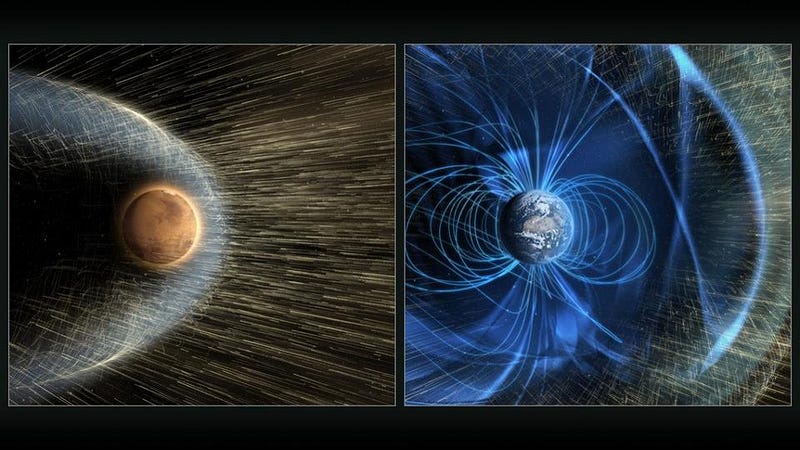
Will humanity wind up destroying all life on Earth? It’s an unlikely prospect. It’s not impossible, as we’ve already entered what scientists have classified as the 6th great mass extinction. The climate is changing; our wild places are disappearing (less than one-third of the Earth’s surface is now wilderness); the oceans are acidifying; the CO2 concentration in the atmosphere is higher than it’s been in millions of years, and continues to increase at a record rate owing to human activities. If we’re not careful, the possibility of ecological collapse is very real, and could very well result in humanity’s eradication and possibly even the fall of mammals entirely.
But life, in some form, should still persist on our planet. Just as was the case on Venus and Mars, the “game over” moment for life on Earth will likely arise from the influence of the Sun. As time goes on and the Sun continues to burn through its nuclear fuel, it will heat up and get more luminous. After approximately another ~1 billion years, give or take, its energy output will boil the Earth’s oceans as well, bringing an end to life-as-we-know-it here on our planet. While human-caused climate change might bring about our own demise, life on Earth is far more resilient. If we can survive our technological infancy, we’ll have at least many hundreds of millions of years until a planet-threatening crisis arrives. May we continue to rise to the challenge of finding a balance with nature. It’s our only hope of long-term survival.
Send in your Ask Ethan questions to startswithabang at gmail dot com!
Starts With A Bang is written by Ethan Siegel, Ph.D., author of Beyond The Galaxy, and Treknology: The Science of Star Trek from Tricorders to Warp Drive.





